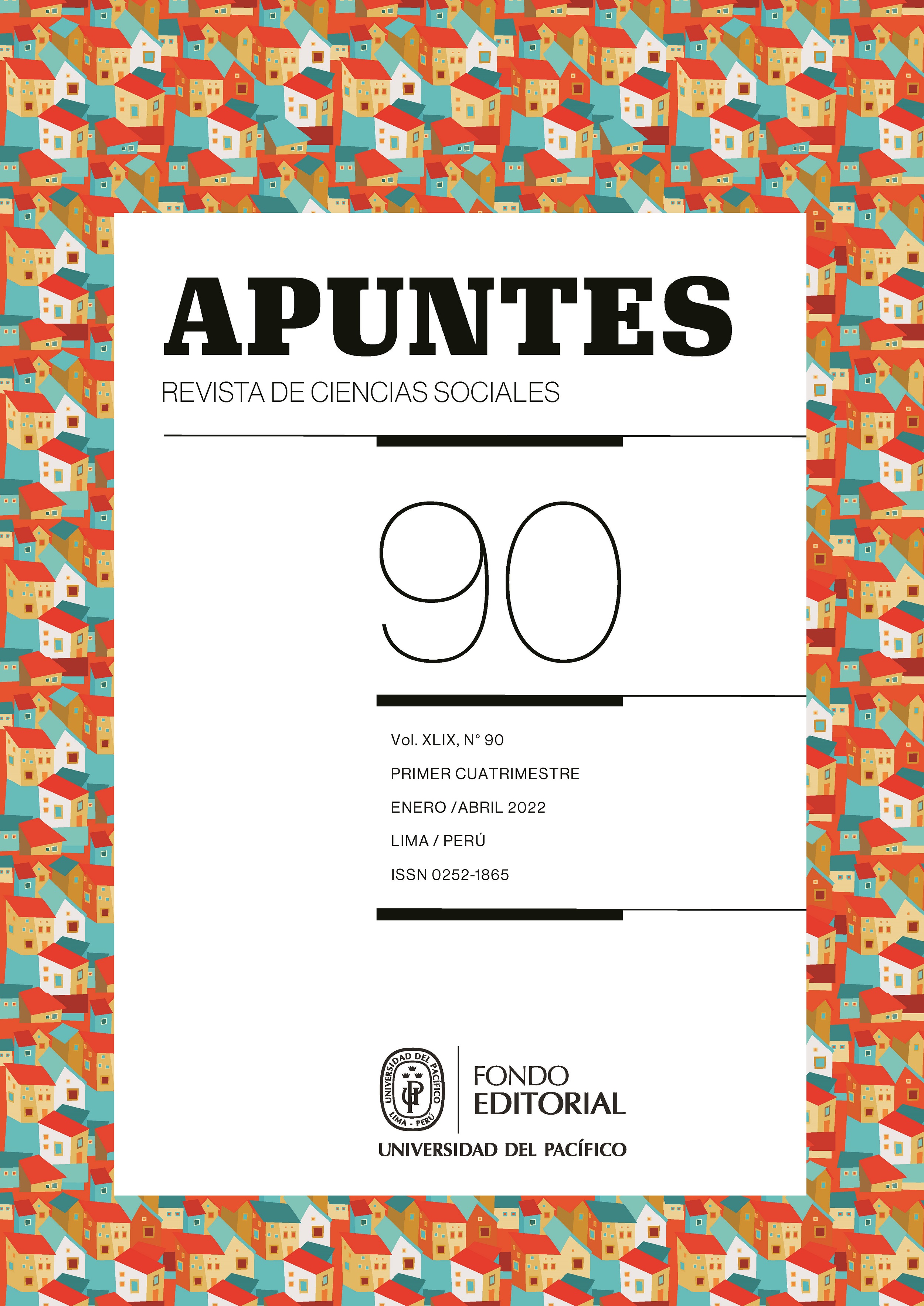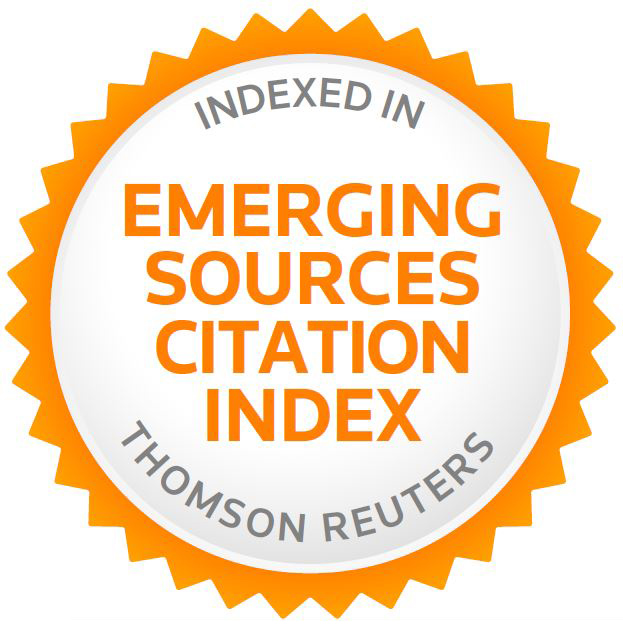La obesidad y el mercado laboral en el Perú
Resumen
La obesidad en un problema que aqueja no solo a países en desarrollo, sino también a países de ingresos medios. Utilizando información antropométrica y socioeconómica, en este artículo analizo la relación entre la obesidad con el empleo y los salarios del Perú. Los resultados muestran que un aumento en el índice de masa corporal (IMC), tiene una relación negativa con la probabilidad de trabajar de las mujeres (-0.3 puntos porcentuales en promedio); en particular, entre las casadas. En el caso de los hombres, no se observa alguna relación estadísticamente significativa. Con relación a los salarios mensuales, un incremento en el IMC se asocia a una reducción de 0.8% en los salarios de las mujeres (US$ 2.3 en promedio).Referencias
Ahn, R., Kim, T. H., & Han, E. (2019). The moderation of obesity penalty on job market outcomes by employment efforts. International journal of environmental research and public health, 16 (16), 2974.
Ahsan, M. N., & Böckerman, P. (2019). Alternative measures of body composition and wage premium: New evidence from Indonesia, PloS one, 14 (8), 1-6.
Álvarez-Dongo, D., Sánchez-Abanto, J., Gómez-Guizado, J, & Tarqui-Mamani, C. (2012) Sobrepeso y obesidad: prevalencia y determinantes sociales del exceso de peso en la población peruana (2009-2010). Revista Peruana de Medicina Experimental y Salud Pública, 29, 303–313.
Arceo-Gomez, E. O., & Campos-Vazquez, R. M. (2014). Race and marriage in the labor market: A discrimination correspondence study in a developing country. American Economic Review, 104 (5), 376–380.
Asgeirsdottir, T. L. (2011). Do body weight and gender shape the work force? The case of Iceland. Economics & Human Biology, 9 (2), 148–156.
Atella, V., Pace, N., & Vuri, D. (2008). Are employers discriminating with respect to weight?: European evidence using quantile regression. Economics & Human Biology, 6 (3), 305–329.
Averett, S., & Korenman, S. (1999). Black-white differences in social and economic consequences of obesity. International Journal of Obesity, 23 (2), 166–173.
Averett, S. L. (2019). Obesity and labor market outcomes. IZA World of Labor, 32.
Baum, C. L, & Ford, W. F. (2004). The wage effects of obesity: a longitudinal study. Health economics, 13 (9), 885–899.
BCRP. (2018). Memoria 2018, Banco Central de Reserva del Perú.
Beauchamp, J. P., Cesarini, D., Johannesson, M., van der Loos, M. J., Koellinger, P. D., Groenen, P. J., … & Christakis, N. A. (2011). Molecular genetics and economics. Journal of Economic Perspectives, 25 (4), 57–82.
Benjamin, D. J., Cesarini, D., Chabris, C. F., Glaeser, E. L., Laibson, D. I., Age, Gene/Environment Susceptibility-Reykjavik Study:, … & Smith, A. V. (2012). The promises and pitfalls of genoeconomics, Annu. Rev. Econ., 4 (1), 627-662.
Biroli, P. (2015). Genetic and economic interaction in the formation of human capital: the case of obesity. Technical Report, Mimeo. University of Zurich.
Bozoyan, C., & Wolbring, T. (2011). Fat, muscles, and wages. Economics & Human Biology, 9 (4), 356–363.
Bramming, M., Jørgensen, M. B., Christensen, A. I., Lau, C. J., Egan, K. K., & Tolstrup, J. S. (2019). BMI and labor market participation: a cohort study of transitions between work, unemployment, and sickness absence. Obesity, 27 (10), 1703–1710.
Brunello, G., & d’Hombres, B. (2005). Does obesity hurt your wages more in Dublin than in Madrid? Evidence from ECHP. Institute for the Study of Labor, IZA Working Paper 1704.
Brunello, G., & d’Hombres, B. (2007). Does body weight affect wages?: Evidence from Europe. Economics & Human Biology, 5 (1), 1–19.
Brunello, G., Anna Sanz-de-Galdeano, A., & Terskaya, A. (2019). Not only in my genes: the effects of peers’ genotype on obesity. Journal of Health Economics, 72, 102349.
Buchinsky, M. (2002). Quantile regression with sample selection: estimating women’s return to education in the US, in Economic applications of quantile regression (pp. 87-113). Physica. Heidelberg.
Caliendo, M., & Gehrsitz, M. (2016). Obesity and the labor market: A fresh look at the weight penalty. Economics & Human Biology, 23, 209–225.
Caliendo, M., & Lee, W. S. (2013). Fat chance! Obesity and the transition from unemployment to employment. Economics & Human Biology, 11 (2), 121–133.
Campos-Vazquez, R. M., & Gonzalez, E. (2020). Obesity and Hiring Discrimination. Economics & Human Biology, 37, 100850.
Campos-Vazquez, R. M., & Nuñez, R. (2019). Obesity and labor market outcomes in Mexico. Estudios Económicos, 34 (2), 159–196.
Carrillo, B., Queiroz, P. W. Charris, C. A., & Coelho, A. B. (2017). New evidence of the effect of body weight on labor market outcomes in a developing country. Pesquisa e planejamento econômico, 47 (2), 177–196.
Cawley, J. (2000). Body weight and women’s labor market outcomes. National Bureau of Economic Research (NBER), NBER Working Papers 7841.
Cawley, J. (2004). The impact of obesity on wages. Journal of Human resources, 39 (2), 451–474.
Cawley, J., Grabka, M. M., Lillard, D. R. (2005). A comparison of the relationship between obesity and earnings in the US and Germany. Schmollers Jahrbuch, 125 (1), 119–129.
Cawley, J., Han, E., & Norton, E. C. (2011). The validity of genes related to neurotransmitters as instrumental variables. Health economics, 20 (8), 884–888.
Cawley, J., Han, E., Kim, J. J., & Norton, E. C. (2017). Testing for peer effects using genetic data. National Bureau of Economic Research (NBER), NBER Working Papers 23719.
Cawley, J., & Meyerhoefer, C. (2012). The medical care costs of obesity: an instrumental variables approach. Journal of health economics, 31 (1), 219–230.
Clément, M., Levasseur, P., & Seetahul, S. (2020). Is excess weight penalised or rewarded in middle-income countries’ labour markets?. Kyklos, 73 (2), 161-195.
Colchero, M. A., & Bishai, D. (2012). Weight and earnings among childbearing women in Metropolitan Cebu, Philippines (1983–2002). Economics & Human Biology, 10 (3), 256–263.
Conley, D. (2009). The promise and challenges of incorporating genetic data into longitudinal social science surveys and research. Biodemography and Social Biology, 55 (2), 238–251.
DeBeaumont, R. (2009). Occupational differences in the wage penalty for obese women. The Journal of Socio-Economics, 38 (2), 344–349.
DeBeaumont, R., & Girtz, R. (2019). The mediation effect of self-esteem on weight and earnings. Atlantic Economic Journal, 47 (4), 415–427.
Dolton, P., & Xiao, M. (2015). The intergenerational transmission of BMI in China. Economics & Human Biology, 19, 90–113.
Ehmke, M. D., Warziniack, T., Schroeter, C., & Morgan, K. (2008). Applying experimental economics to obesity in the family household. Journal of Agricultural and Applied Economics, 40 (2), 539–549.
Galarza, F. B., & Yamada, G. (2014). Labor market discrimination in Lima, Peru: evidence from a field experiment. World Development, 58, 83–94.
Garcia, J., & Quintana-Domeque, C. (2006). Obesity, employment and wages in Europe. Advances in health economics and health services research, 17, 187–217.
Garcia, J., & Quintana-Domeque, C. (2009). Income and body mass index in Europe. Economics & Human Biology, 7 (1), 73–83.
Gortmaker, S. L., Must, A., Perrin, J. M., Sobol, A. M., & Dietz, W. H. (1993). Social and economic consequences of overweight in adolescence and young adulthood. New England journal of medicine, 329 (14), 1008–1012.
Gregory, C. A., & Ruhm, C. J. (2011). Where does the wage penalty bite?. In N. Mocan & M. Grossman (Eds.). Economic Aspects of obesity (315-347). University of Chicago Press.
Greve, J. (2008). Obesity and labor market outcomes in Denmark. Economics & Human Biology, 6 (3), 350–362.
Han, E., Norton, E. C., & Powell, L. M. (2011). Direct and indirect effects of body weight on adult wages. Economics & Human Biology, 9 (4), 381–392.
Han, E., Norton, E. C., & Stearns, S. C. (2009). Weight and wages: fat versus lean paychecks. Health economics, 18 (5), 535–548.
Heckman, J. (1979). Sample Selection Bias as a Specification Error. Econometrica, 47 (1), 153161.
Herrera, B. M., Keildson, S., & Lindgren, C. M. (2011). Genetics and epigenetics of obesity. Maturitas 69 (1), 41–49.
Hildebrand, V., & Van Kerm. P. (2010). Body size and wages in Europe: a semi-parametric analysis, McMaster University.
Howe, L. D., Kanayalal, R., Harrison, S., Beaumont, R. N., Davies, A. R., Frayling, T. M., … & Wood, A. R. (2019). Effects of body mass index on relationship status, social contact, and socioeconomic position: Mendelian randomization study in UK Biobank. BioRxiv, 524488.
INEI (2011). Ficha técnica: monitoreo de indicadores nutricionales en la encuesta nacional de salud de hogares. Instituto Nacional de Estadística e Informática.
INEI (2019). Comportamiento de los indicadores de mercado laboral a nivel nacional. Instituto Nacional de Estadística e Informática.
Jay, P., & Xuezheng. Q. (2013). The impact of body size on urban employment: evidence from China. China Economic Review, 27, 249–263.
Johansson, E., Bockerman, P., Kiiskinen, U., & Heliövaara, M. (2009). Obesity and labour market success in Finland: the difference between having a high BMI and being fat. Economics & Human Biology, 7 (1), 36–45.
Johar, M., & Katayama, H. (2012). Quantile regression analysis of body mass and wages. Health Economics, 21 (5), 597–611.
Koenker, R., & Bassett Jr, G. (1978). Regression quantiles. Econometrica: journal of the Econometric Society, 33–50.
Kortt, M., & Leigh, A. (2010). Does size matter in Australia?. Economic Record, 86 (272), 71–83.
Lakdawalla, D., & Philipson, T. (2002). The growth of obesity and technological change: a theoretical and empirical examination. National Bureau of Economic Research (NBER), NBER Working Papers 8946.
Lindeboom, M., Lundborg, P., & van der Klaauw, B. (2009). Obesity and labor market outcomes: evidence from the British NCDS. Institute for the Study of Labor (IZA), IZA Working Paper 4099.
Locke, A. E., Kahali, B., Berndt, S. I., Justice, A. E., Pers, T. H., Day, F. R., … & Croteau-Chonka, D. C. (2015). Genetic studies of body mass index yield new insights for obesity biology. Nature, 518 (7538), 197–206.
Loh, E. S. (1993). The economic effects of physical appearance. Social Science Quarterly, 420–438.
Lundborg, P., Nystedt, P., & Rooth, D. O. (2010). No country for fat men? Obesity, earnings, skills, and health among 450,000 Swedish men. Institute for Study of Labor (IZA), IZA Working Paper 4775.
Lundborg, P., Nystedt, P., & Rooth, D. O. (2014). Body size, skills, and income: evidence from 150,000 teenage siblings. Demography. 51 (5), 1573–1596.
Mitra, A. (2001). Effects of physical attributes on the wages of males and females. Applied Economics Letters, 8 (11), 731–735.
Mocan, N., & Tekin, E. (2011). Obesity, self-esteem and wages. In N. Mocan & M. Grossman (Eds.). Economic aspects of obesity (349-380). University of Chicago Press.
Morris, S. (2006). Body mass index and occupational attainment. Journal of health economics, 25 (2), 347–364.
Morris, S. (2007). The impact of obesity on employment. Labour Economics, 14 (3), 413–433.
Norton, E. C., & Han, E. (2008). Genetic information, obesity, and labor market outcomes. Health economics, 17 (9), 1089–1104.
OECD (2019). Health at a Glance 2019: OECD Indicators. OECD.
Pagan, J. A., & Davila, A. (1997). Obesity, occupational attainment, and earnings. Social Science Quarterly, 78 (3) 756–770.
Philipson, T. J., & Posner, R. A. (1999). The long-run growth in obesity as a function of technological change. National Bureau of Economic Research (NBER), NBER Working Paper 7423.
Pinkston, J. C. (2017). The dynamic effects of obesity on the wages of young workers. Economics & Human Biology, 27, 154–166.
Ramsey, J. B. (1969). Tests for specification error in classical linear least-squares regression analysis. Journal of the Royal Statistical Society: Series B (Methodological), 31 (2), 350-371.
Register, C. A., & Williams, D. R. (1990). Wage effects of obesity among young workers. Social Science Quarterly, 71 (1), 130.
Revilla, L., Alvarado, C., Álvarez, D., Tarqui, C., Gómez, G., Jacoby, E., & Sanchez-Griñan, M. (2012). Un gordo problema: sobrepeso y obesidad en el Perú. Lima: Ministerio de Salud, 1, 21.
Sabia, J. J., & Rees, D. I. (2012). Body weight and wages: evidence from Add Health. Economics & Human Biology, 10 (1), 14–19.
Savona-Ventura, C., & Savona-Ventura, S. (2015). The inheritance of obesity. Best Practice & Research Clinical Obstetrics & Gynaecology, 29 (3), 300–308.
Schwalb, M. M., Sanborn, C., Galarza, F., Garcia, E., Kogan, L., Mayorga Gutiérrez, D., … & Runciman Saettone, G. (2014). Comida chatarra, estado y mercado. Universidad del Pacífico.
Shimokawa, S. (2008). The labour market impact of body weight in China: a semiparametric analysis. Applied Economics, 40 (8), 949–968.
Thompson, D., Edelsberg, J., Colditz, G. A., Bird, A. P., & Oster, G. (1999). Lifetime health and economic consequences of obesity. Archives of internal medicine, 159 (18), 2177–2183.
von Hinke Kessler Scholder, S., Smith, G. D., Lawlor, D. A., Propper, C., & Windmeijer, F, (2010). Genetic markers as instrumental variables: An application to child fat mass and academic achievement. Center for Microdata Methods and Practice (CEMMAP), CEMMAP Working Paper 03/10.
Wada, R., & Tekin, E. (2010). Body composition and wages. Economics & Human Biology, 8 (2), 242–254.
WHO (2018). World health statistics 2018: Monitoring health for the SDGs, sustainable development goals, World Health Organization.

Esta obra está bajo licencia internacional Creative Commons Reconocimiento 4.0.
Apuntes, revista de Ciencia Sociales publica todos sus artículos y reseñas bajo la licencia Creative Commons Attribution (CC BY 4.0) con el objetivo de fomentar el intercambio académico a nivel mundial. Por ello, la obra en cuestión puede ser distribuida, remezclada, retocada, etc., como el autor y los lectores de la misma lo estimen conveniente. La única condición es que se cite a la revista Apuntes, revista de Ciencias Sociales como entidad editora del texto.








.jpg)



